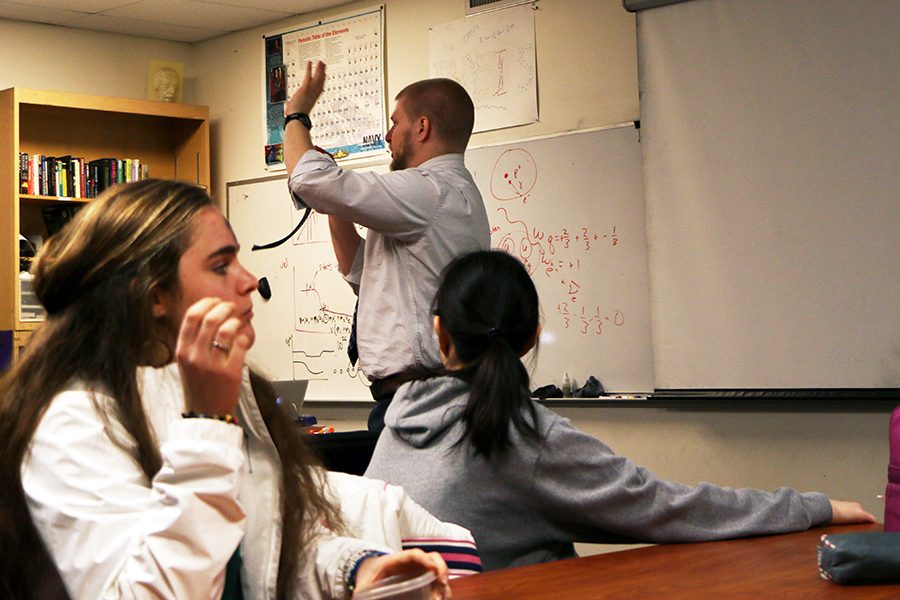NASA discovery fires up science teacher
Hibshman says enthusiasm will transfer to his students
Physics and astronomy teacher Mr. Adam Hibshman instructs his G period class on March 1.
This discovery is exciting to physics and astronomy teacher Mr. Adam Hibshman said a recent NASA discovery of seven new exoplanets gives him even more to teach his students.
“Exoplanets are any planets that orbit a star different from our sun. The first exoplanets were discovered in the ’90s, but we have discovered over 4,000 now,” Hibshman said.
Discovering the planets is a great feat, mainly because of the precision involved. The planets and the telescope that discovered them needed to be lined up exactly right. However, the method used to find this new system can be boiled down to a simple graph. Hibshman said, “When a planet orbits a star, the light emitted from that star is slightly decreased. That information can be charted in a graph that even amateur astronomers can create and document.” A powerful telescope, NASA’s Spitzer, detected these irregularities in light. Once the planets were discovered, scientists “essentially used math to determine (their) size,” Hibshman said.
When it comes to using the new exoplanets in the classroom, Hibshman appreciates the enthusiasm they create with his students. “(Discoveries like this) get kids excited. It gives me more recent and relevant content to talk about. Especially with the method used to discover these planets, it’s something that students can possibly do in college or even as a hobby.”
Hibshman’s main hope is for his enthusiasm about this discovery — and others like it — to catch on with students. “Students constantly ask why they need to learn things. Discoveries like these prove the importance of learning,” he said.
One of the notable factors of the new exoplanets is their rocky surfaces and their location of the habitable zone. Hibshman said, “This is also called the Goldilock’s zone. The planet is not so close to the star that water would boil off, and it is not so far from the far that the water would freeze.”
The possibility of water on a rocky, earth-like planet creates speculation about whether life is present on these new exoplanets. Hibshman wished neither to confirm nor deny this possibility. “I think these planets increase the assumption of life, but there are many more factors to support life,” he said.







